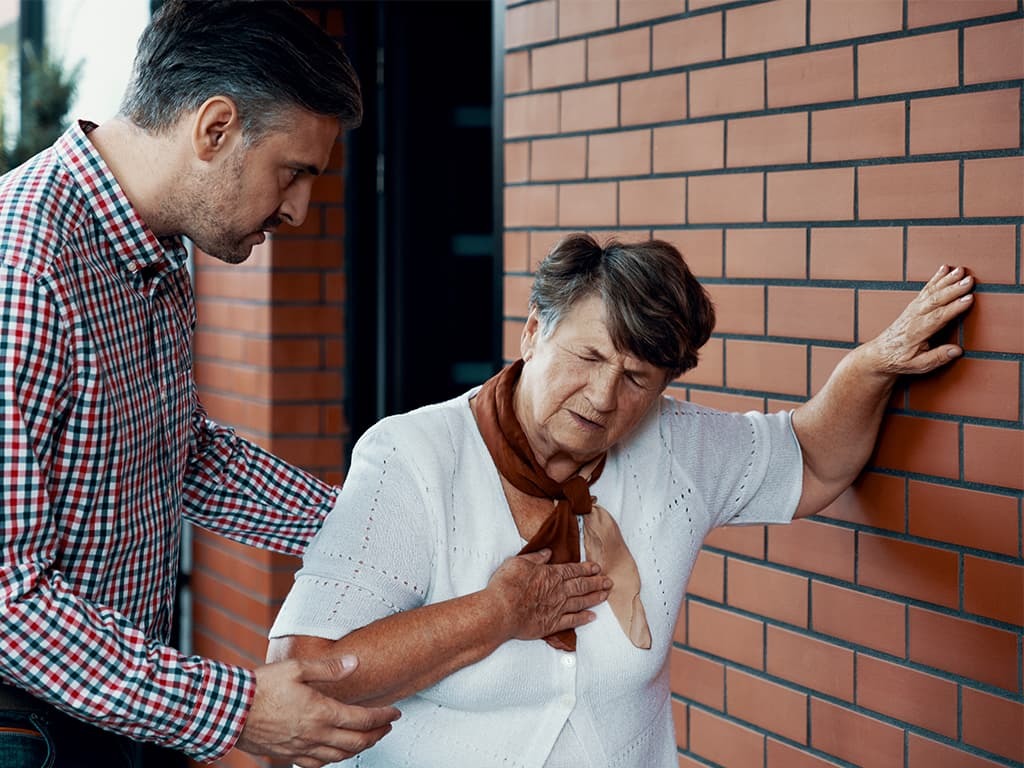- You are here:
- Home »
- Blog »
- Understanding ALS »
- How is Breathing Affected by ALS?

How is Breathing Affected by ALS?
Amyotrophic lateral sclerosis (ALS) is a neurodegenerative disease that gradually affects the whole body. Once nerves have been damaged, they begin to die and are prevented from sending messages to and from the brain.
As the disease progressively gets worse, a number of issues need to be addressed. One of these is how breathing is affected. The most common cause of death associated with ALS is from respiratory failure. Managing breathing issues as the disease progresses can be a challenge, particularly in the later stages.
Here we take a closer look at how breathing is affected in individuals with ALS and what options there are for managing these respiratory issues.
Regular Respiration
When we breath in (inhale), a layer of muscle called the diaphragm, just below the lungs, moves down. When this happens, air is drawn into the lungs and the rib cage expands. Oxygen is absorbed into the blood vessels and used to power the body.
When we breathe out (exhale), the reverse happens. The diaphragm moves up and pushes the air out of the lungs including the waste product carbon dioxide.
Our breathing is controlled by the brain depending on our needs. For example, when we run or exercise, breathing increases to provide more oxygen to the body. When we sleep our breathing is much shallower.
This is a simple explanation of how the human respiratory system works.
How ALS Affects Breathing
ALS can progress in different ways, depending on the individual. There is no standard pathway. Problems with breathing may occur in the early stages of the disease or this be a symptom that is experienced in the later stages.
When the muscles that are used to fill and collapse the lungs become weakened because of damage to the neurons that serve them, it becomes more difficult to breathe. This can mean the diagnosed individual is unable to exercise without getting tired or they might have trouble sleeping because they can’t get enough oxygen. Weakened muscles also make it much more difficult to cough and clear the throat.
At night, for example, we tend to breathe shallowly because our body doesn’t need as much oxygen and energy. This means that the secondary muscle groups that are used in normal breathing aren’t used. In ALS patients, the breathing can become even shallower and that often causes them to wake up several times, disrupting their sleep.
Symptoms
Early symptoms of ALS associated with breathing may include shortness of breath, being tired all the time and having trouble going to sleep. It’s important to monitor breathing capacity once ALS respiratory failure signs have been identified to ensure that the individual gets the support they need.
Managing Respiratory Issues

Whether they occur early or late in the progression of the disease, there are number of ways to manage respiratory issues.
In the initial stages, physical therapy may be used to improve lung capacity and efficiency. There are a variety of breathing exercises that can be used and yoga and meditation may also help with any new changes taking place.
The positioning of the body to ensure breathing is maximized also helps. This can be helped by improving posture or using an extra pillow to elevate the head when sleeping.
Reduced respiratory ability often leads naturally to a loss of energy, so taking regular rests is another approach that may be advised during the earlier stages of the disease.
Most physicians advise that individuals with ALS-associated breathing issues try to avoid catching colds and should have flu injections at winter time. The use of certain medicines can also have an impact on breathing and may need to be changed.
As the disease progresses and breathing becomes a lot more difficult, management of respiratory issues will usually involve using a ventilation device. Theses can either be invasive or non-invasive.
Non-invasive ventilation devices come in the form of a mask which is attached to a portable machine. This can be put on and taken off when needed. This is the most common type of ventilation device and might be used at specific times such as when going to sleep.
Invasive ventilation devices are fitted via a tracheostomy where a tube is inserted into the windpipe and connected to a machine that takes over the breathing process entirely. This is used when breathing is extremely difficult, usually, once the individual is nearing their end of life.
